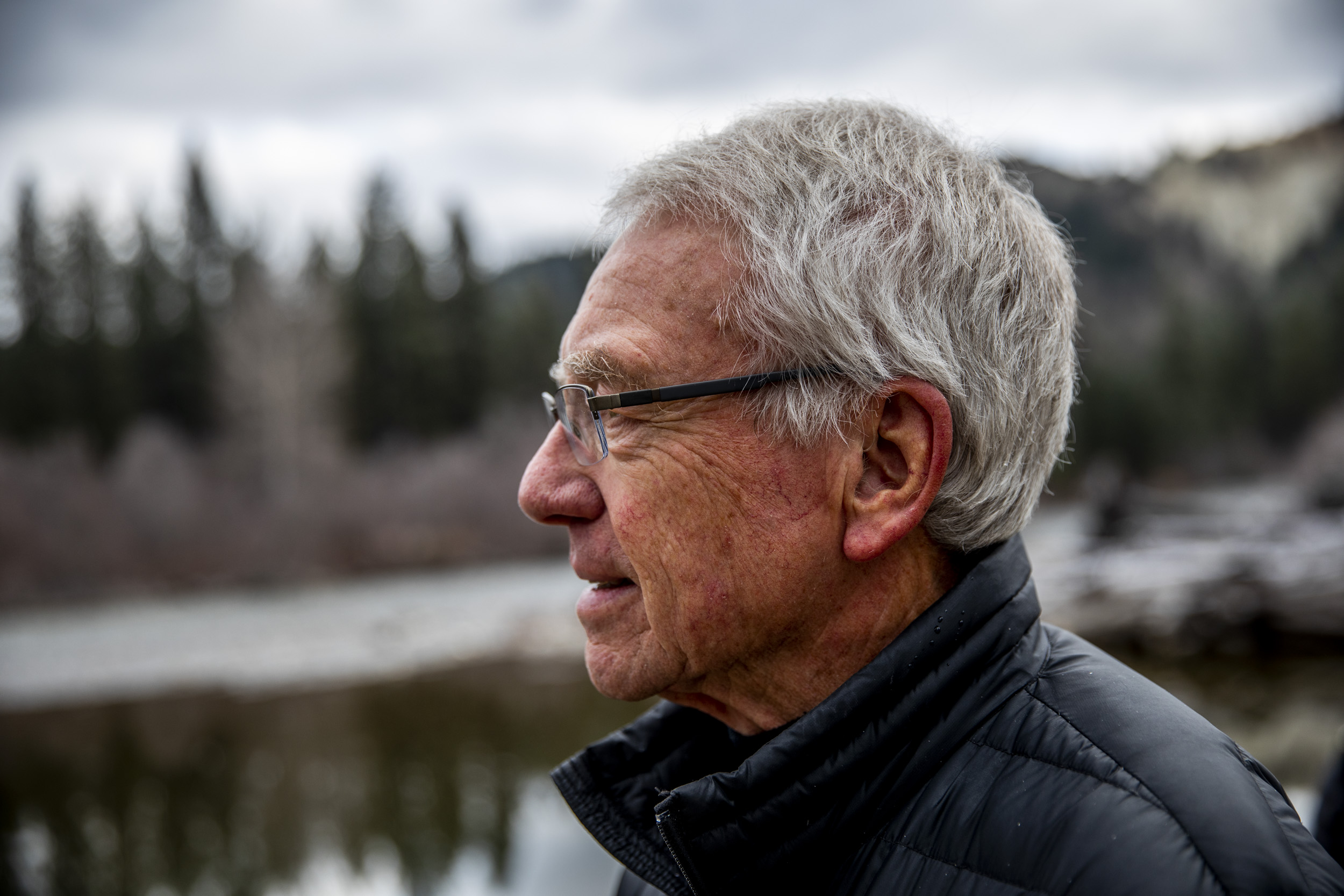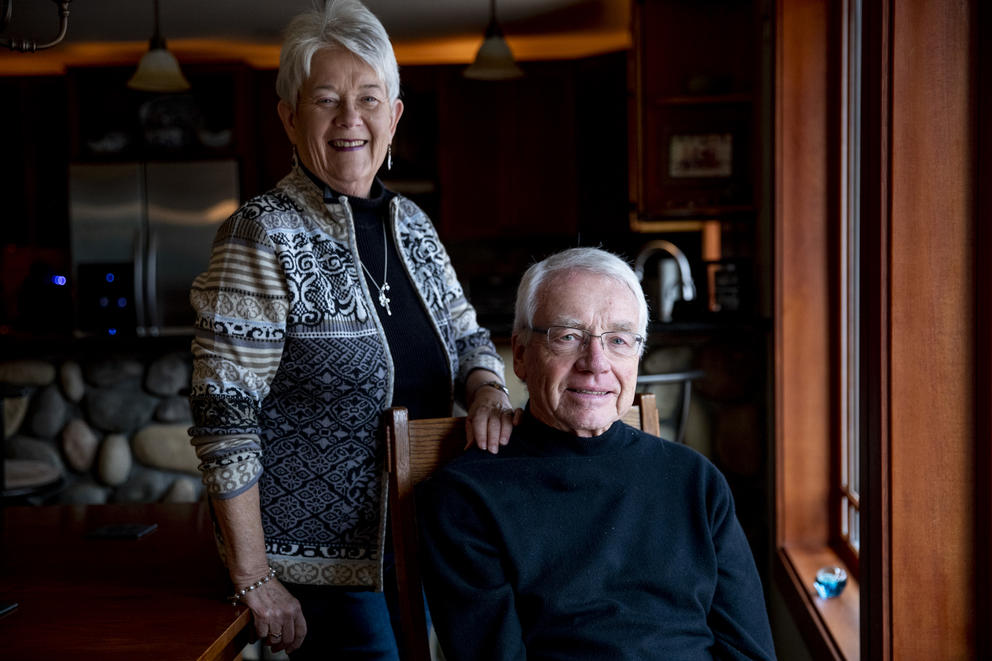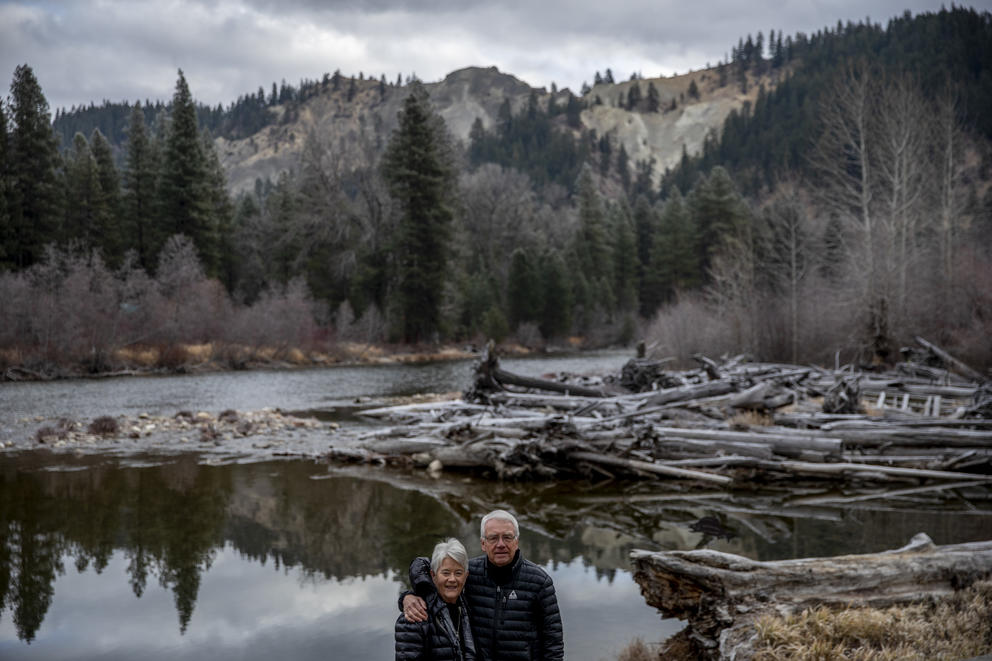Morgan’s primary care doctor visited him in the emergency room and insisted on an ambulance for emergency services in Wenatchee. The specialists there told Morgan if Cascade hadn’t administered the antibiotics as quickly as they had, and had Morgan had gotten to Wenatchee just 30 minutes later, he wouldn’t have lived.
“They consider it a miracle,” says Stan’s wife, Mary. “The Leavenworth hospital is a gem … I can’t say enough good things about them.”
Cascade is one of 40 Critical Access Hospitals (CAHs) that serve the 30 rural counties in Washington state. These hospitals generally provide all of the medical services for a community, from emergency rooms to acute care, although they don’t all have specialty services such as surgical capabilities. Patients must use rural ambulance services or helicopters in crisis situations to reach the closest hospital that can handle their cases.
CAHs are viewed as critical lifelines for these counties, which are home to fewer than 100 people per square mile. They serve isolated communities that experience different barriers to health care, including less access to specialty services. And many are under threat.
Pat Justis, who heads the state’s Office of Rural Health, refers to it as the rule of thirds: a third of Washington's rural hospitals are doing well, a third are walking a fine line, and the last third are financially challenged, at risk of closure.
A facility must meet certain criteria to be designated a CAH, such as being more than a 35-mile drive from another hospital (or 15 in mountainous terrain) and providing 24-hour emergency services. The designation allows CAH’s to use federal and state funding, such as cost-based reimbursement for Medicare, loan programs and grants. However, these sources often do not provide enough support for these institutions to survive, and some live precariously on local levies.
Five years after the state initiated a program to assess these hospitals, some remain in a precarious position, though administrators say they are seeing some improvement.
CEO Diane Blake of Cascade Medical Center, where Stan Morgan received his care, says hospitals like hers are a safety net for rural communities dependent on nearby medical care, especially in communities with rural roads. Cascade offers a full spectrum of care, including a large family practice clinic (which includes a psychologist for mental health); occupational, physical, and speech therapies; an emergency department; and ambulance service.

Ambulance service is important, since Cascade serves an area of 1,200 square miles. It’s also necessary to transport patients, like Morgan, to Wenatchee, a half-hour drive away, where they can access services such as surgery that Cascade does not offer. However, ambulance service can be extremely detrimental to a hospital’s finances. Cascade’s service is funded by a levy, which the community just voted to reapprove this past spring, although it still operates at a loss. It’s also not a service covered under Medicaid and Medicare.
“I think that is the case with many primary care services, that if it's difficult to access because there isn't a robust public transportation system, or it’s far to drive, or ... as people age, sometimes the longer-distance travel by car becomes more of a barrier,” she says. “So being located locally means that there's greater access to all those whole person care services that help the health and well being of our community.”
The Washington State Department of Health recognized that these hospitals faced distinct problems earlier this decade. The department met in 2013 with the Washington State Hospital Association to look at health care reform for rural communities. Together they released the New Blue "H" report, which resulted in the formation of the Washington Rural Health Access Preservation (WRHAP) project in the fall of 2014. That project examined data from 2013 to 2015 and, in early 2017, identified 14 CAHs at risk of closure.
The 14 hospitals resided in communities across the state, from Forks on the peninsula to Dayton in southeastern Washington. The problems surfaced in the report stemmed mainly from the low volume of patients compared with the high cost of running facilities.
Of the 13 hospitals whose data was released, 11 ran operating margin deficits for all three years. Only two had surpluses, Ritzville for just one year and Tonasket for two years.
Detailed examinations were completed for 10 of the 14 hospitals. The results were dire: all of their primary care clinics had significant monetary losses in 2015: eight in their emergency rooms, seven with their inpatient services, and only four had separate assisted living facilities, all of which had deficits.
Cascade had among the highest deficits during the WRHAP’s 2013-2015 period, with operating margins at almost negative 20% for all three years. Its primary care clinic, emergency department, inpatient care and ambulance service all ran in the red. Of all payers, only Medicare reimbursed enough to cover costs. Medicaid, commercial insurance companies and self-pay all came in with deficits. Cascade makes up for these deficits through levies approved by the community.
“[Our community says], we’re going to help to try to fill that gap between what payers are paying and what it costs to be here and provide quality service,” says Blake, the Cascade CEO. “They recognize that maintaining those services within the community are really essential for the health of both the people and for the health of the community itself.”
She says Leavenworth has a population that is better off economically than other rural health districts, and being able to pay those levies offers an opportunity that other hospitals may not have.
“There’s just less of a basis to draw from and if people are really struggling, even if they know the value of their hospital, they may not feel like they have enough funds to support increased taxes,” Blake says. “I think that we are fortunate.”
Not all rural hospitals can say the same. Emergency rooms like the one that Morgan visited face especially harsh deficits, as they are more expensive in rural areas because of high infrastructure costs, compared with their low volumes of patients.
In most situations, commercial insurance companies pay the same amount per emergency department visit in urban and rural communities. However, in the case of rural ERs, visits cost around $800 to $1,800 because of the low volume of patients. Urban ER visits ranged much lower, from $300 to $750. This has led to large deficits for rural ERs.
The deficits can lead to bankruptcy, leaving rural communities with no critical medical services. WRHAP found that the average travel time after a closure was an extra 30 minutes to the closest hospital, which can mean the difference between life and death for stroke and trauma patients.
As rural communities age, and long-term nursing facilities become necessary, WRHAP found the outlook also extremely poor. A more detailed analysis was conducted on 10 of the hospitals, of which four operated their own long-term care. All ran at a deficit every year, with the closest skilled nursing facilities generally more than half an hour away and which would be unlikely to have enough beds available to accommodate the additional patient load.
Even in primary care clinics, every CAH in the WRHAP study had losses in 2015. On average, revenue covered only two-thirds of clinic costs. Every assisted living facility and ambulance service provided by the CAH saw losses, as did 80% of ERs.
The main problems WRHAP found were in losses from the high cost of staffing compared with low volumes of patients. A CAH must provide 24-hour emergency services, with staff available within 30 to 60 minutes, depending on the remoteness of the hospital. Generally, a CAH must meet the same state staffing criteria as a general hospital. ERs were staffed to handle as many as 60 to 70 visits per day but were seeing only one to 26. The same was found for primary care clinics.
In 2015, the last year of data studied, half of those hospitals were paid out by Medicare, one-quarter was Medicaid, slightly less than a quarter was commercial and a small percentage was self-pay. Although Medicaid expansion in the state has greatly helped, federal payments do not completely cover expenses through Medicare.
In 2017, the state Department of Health took another critical look at 18 financially stressed public hospital districts in rural communities, examining “days cash on hand,” a standard measure of a hospital’s ability to survive financial stress. The department found the cash on hand available to cover costs at CAHs ranged from three to 167 days, where the 2017 national median for all nonprofit hospitals was 214 days.
Coulee Medical Center was ranked the lowest of the 18 examined, with a reserve of only 3.1 days if financial stress were to occur. Coulee, which serves an area of 50 miles in any direction, has closed twice before: three years in the mid-’60s, and again for six months in 1972.
CEO Ramona Hicks says Coulee is now doing better than ever before. It has been able to hire new employees and retain surgical staff.
Many rural hospitals work closely with state health organizations, such as the Northwest Rural Health Network, the Washington State Hospital Association and the Office of Rural Health, which provide everything from grants to resources to policy and legal help.
Hicks says the medical center receives resources from the state hospital association in developing quality programs and legislation, as well as grants from the Office of Rural Health. These help to subsidize payments from Medicaid, Medicare and commercial insurers.
She says some of the financial stress comes from a lack of levies, as there is not much to tax with the community mostly relying on the Grand Coulee Dam for employment. The clinic receives about $242,000 a year in levies, she says, which doesn’t pay for even half of payroll. Compare this with a nearby hospital in Quincy, which brings in over a million in levies annually.
One of the reasons Coulee maintains a high volume of patients is its obstetric services, which not every CAH provides. Hicks says the nearby hospitals in Tonasket and Republic have stopped OB services. The one in Brewster does, but is struggling.
Having OB care saves lives in rural communities, Hicks says. Helicopters won’t transfer anyone in labor who is dilated over 5 centimeters, so if there’s an emergency, the medical center is dependent on their community.
“If you need a C-section, and there’s no infrastructure for a surgeon, anesthesiologist, then women in labor are going to die,” she says. “If we stopped OB, our community would die.”
Dr. Andy Castrodale, one of their surgeons and head of obstetrics, has been at Coulee Medical for over two decades. Like many who work at these rural hospitals, Castrodale has his hand in a little bit of everything, from outpatient to long-term care to the ER.
He inherits entire generations of family care, he says, and they remember that type of personal connection. Recently, a mother approached Castrodale with some kind words: You’re my favorite doctor, because you saved the life of my nephew when he was born 16 years ago.
Castrodale recalled that snowy night, when no ambulance could travel and no helicopter could fly. The pediatric team was all in Montana and couldn’t get there for eight hours to help the preemie, who had arrived at only 25 weeks old. He performed an emergency C-section.
“The kid obviously would have died,” he says. That wasn’t an exceptional case. There have been many times where lives have been saved because Coulee had surgical care, Castrodale says.
“There’s only maybe three other hospitals in this state that it’s further door to door between one ER and the next. When you go to obstetrics, it’s further,” he says. “So if we disappeared right now, there’d be a huge hole there. If we went away, there’d be a 200-mile diameter [distance].”
The medical center also serves the Colville Reservation. The reservation has several dedicated clinics, but many still come to Coulee. Hicks, who is of the Grosventres Tribe in Montana, has worked hard to build a relationship over the past four years with tribal members. Historical photography of the confederated tribes are sprinkled throughout the hospital wings and recently, they’ve purchased a dedicated onsite tepee for smudging and ceremonial needs. It is also specially designed to fit gurneys.
Hicks came on as CEO two years ago, when the medical center was $4 million in debt. She worked directly with consultants, the board of directors and medical staff to make changes, such as doing billing inhouse (the center was losing money by outsourcing, she says). Every medical professional in the community is a hospital employee, she says, and that’s made a huge difference.
“They said we’re all on board, how do we do it, what do we need to do,” she says. “Being a nurse, I believe strongly in shared governance, listening to people, figuring out what managers and directors need. We ended up hiring more people than we’ve had in the past.”
Justis of the state Office of Rural Health says many of these hospitals aren’t passive in their duties to their communities. They are working hard to creatively retain staff and fund their districts. While some are hanging by a thread, they’re all fighting hard to serve their communities as effectively as possible.
“Many of the hospitals are not sitting back and waiting to be helped. They are very actively developing strategies,” she says. “There are many leaders at these rural hospitals that are really, really trying to envision how to move into the future and doing what they can to [accomplish] that.”




